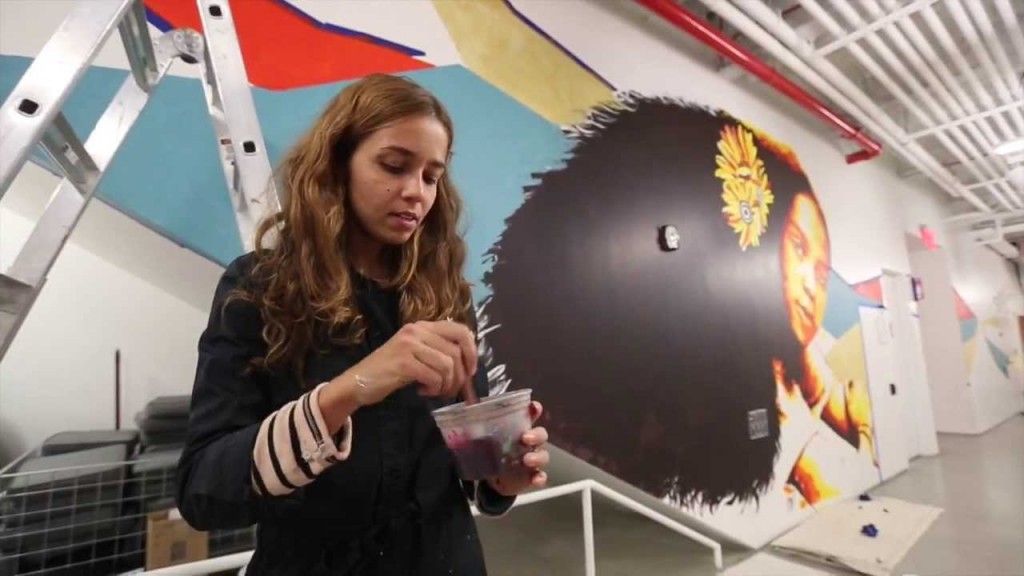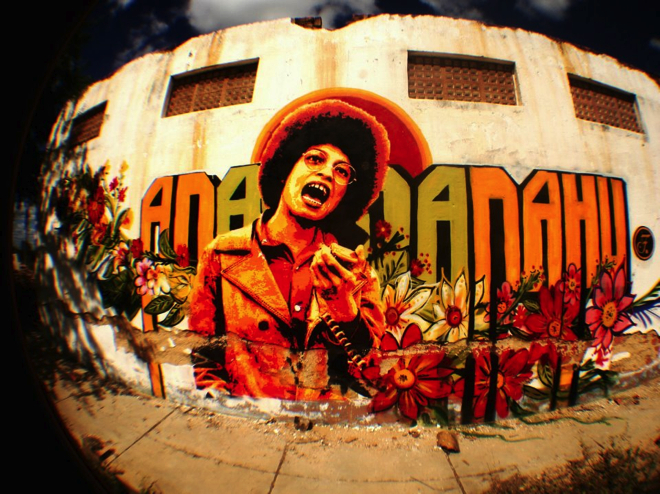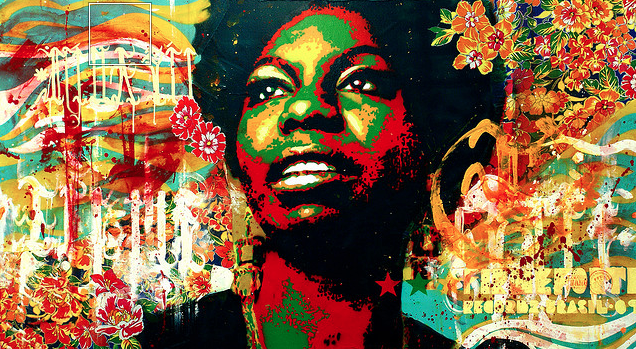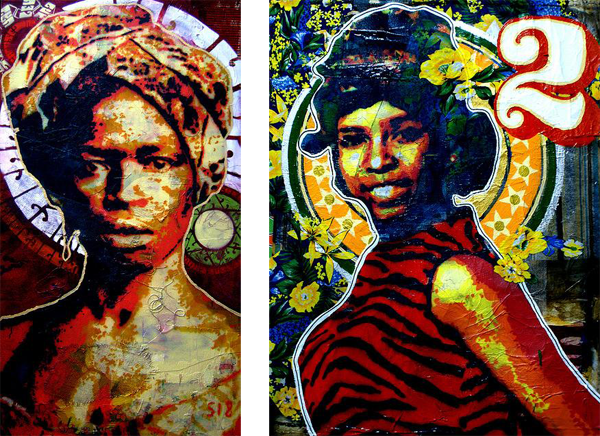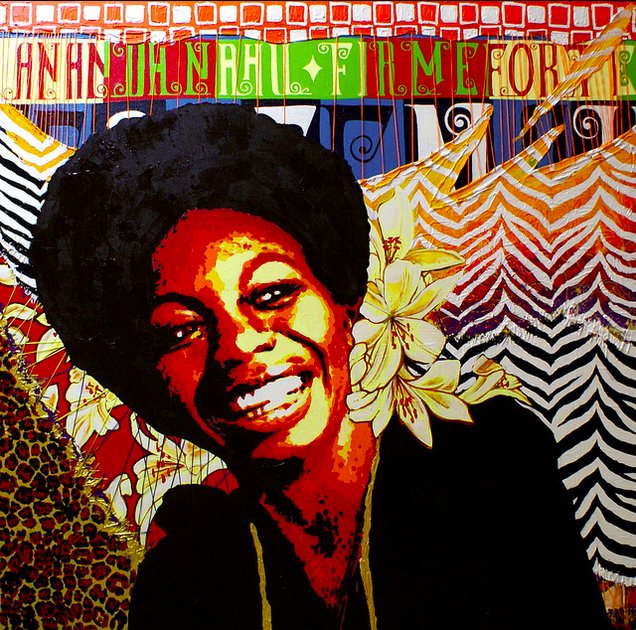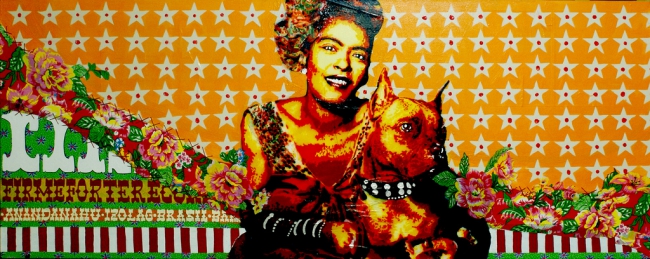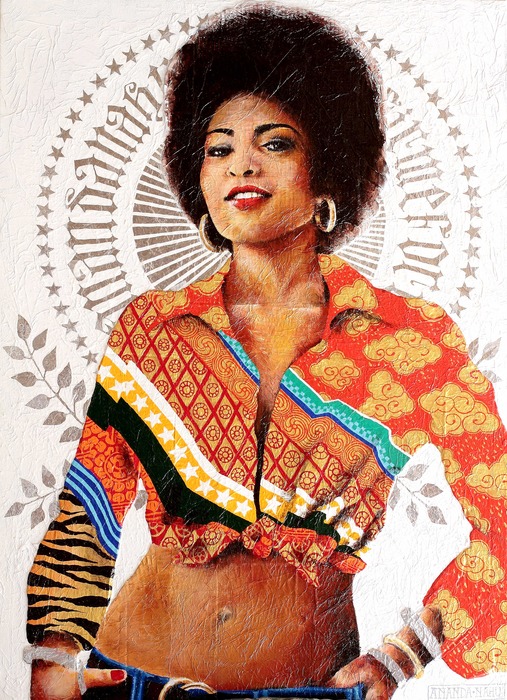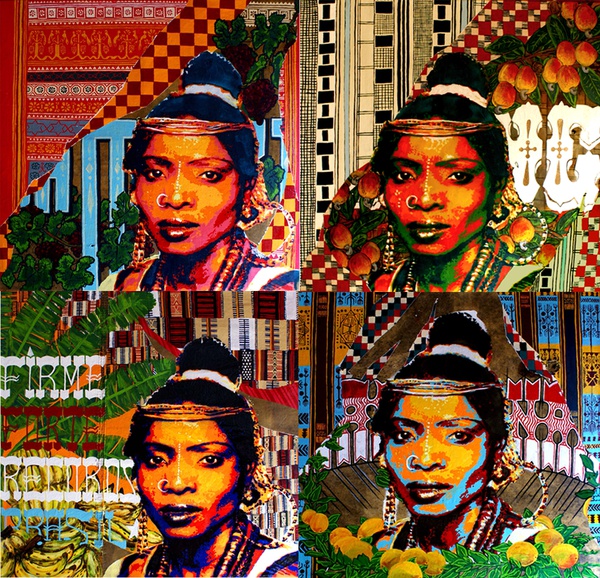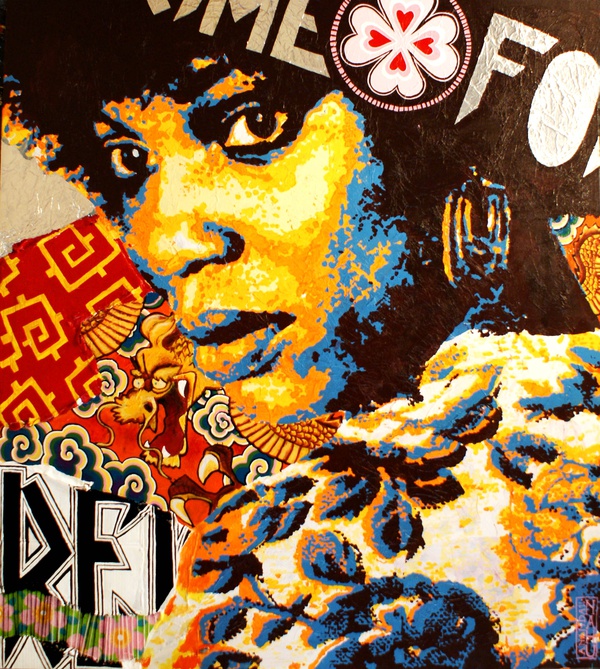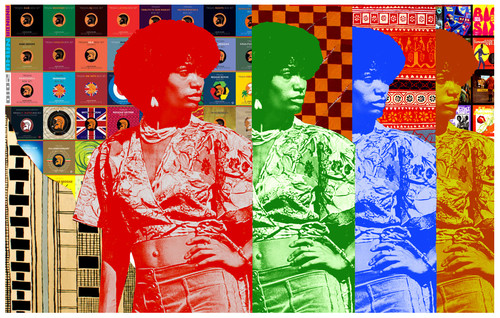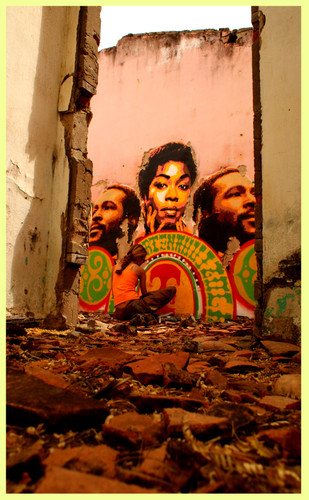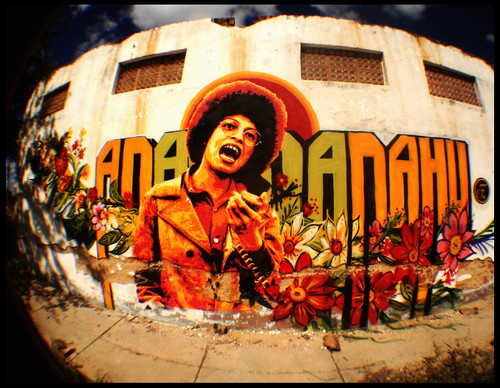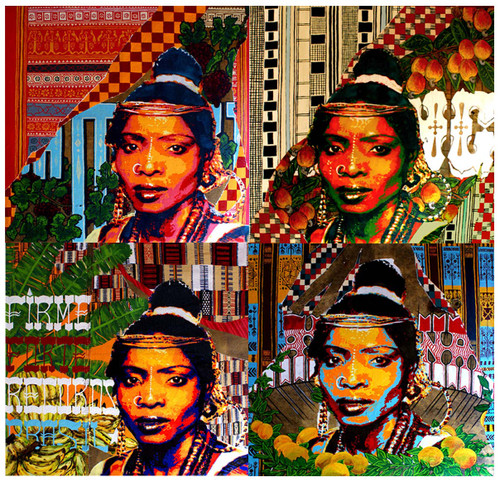ANANDA NAHU
Ananda Nahu was born in Juazeiro, on Bahia, Brazil, in 1985. Moved to Salvador in 2001, in 2003 she attended College of Design abandoning it to start in 2004 to attend Fine Arts at the Federal University of Bahia. In this period, she became interested in studying photography and engravings, marked by time studies and research lithography, Serigraphs, metal engraving, and consequently a deepening works in references to these engraving techniques that are Posters.
In 2005 begins to develop the stencil, one type of engraving that is leaked into the mold to obtain shapes and pictures. From the beginning of the fitting colors of the pictures, apply this combination on the stencil and began to work with multiple layers of color. Use these pictures in creating artistic compositions in urban environments and canvases, also begins to improve regional fabric painting, oriental and African, as well as calligraphy and sources together to compose the picture stencil.
The photographs used to make stencil or free hand painting of his characters are mostly written by the artist itself, which is done a photographic essay for construction work, or if not, are based on photographs from renowned photographers of Latin America.
In her references are album covers and movie posters, posters and banners, black culture, Latin, Islamic and Asian, urban and goticas calligraphy, printing and fabrics Brazilian, African, Chinese and Japanese, also classical and religious paintings.
>via: http://www.anahu.com/#!biography/c1se
__________________________
21 September 2012

Funky, fierce, and fabulous – three words I use to describe Brazilian graffiti artist Ananda Nahu‘s take on everything from soul singing icon Nina Simone to empowering black activist Angela Davis. Hailing from Rio de Janeiro, Ananda’s vibrant pieces are carefully crafted designs that reflect the sultry colors and contagious beat of her culture. Painting […]
Funky, fierce, and fabulous – three words I use to describe Brazilian graffiti artist Ananda Nahu‘s take on everything from soul singing icon Nina Simone to empowering black activist Angela Davis. Hailing from Rio de Janeiro, Ananda’s vibrant pieces are carefully crafted designs that reflect the sultry colors and contagious beat of her culture. Painting the streets of Brazil, Ananda’s artwork is a bold statement of female power and talent. A stark reminder to a machismo society to respect the strength of themulher.
Ananda’s revelation of “the other side of magic” has to do with reaffirming the image of the enlightening and electrifying female that is within each and every one of us. Her work is a symphonic melody to the legends of soul, representing divine femininity in its most perfect form. Ananda’s influences, which range from psychedelic album cover art to traditional fabric weaving, are a testament to the diversity of her environment.
In this translated interview about Ananda’s creative process, Ananda graciously speaks about her path to graffiti art, her technical method, as well as breaking barriers as an extraordinary female street artist.
How would you describe your artwork?
My paintings are the result of the mixture of my influences that passes for music that influences the painting with calligraphy albums, colors, theme, characters and movement of the composition of the album covers, posters and banners, crafts of cultures, religious manifestations in painting, references fabric weaving and the world, mainly Africans and Asians, and the different artistic aspects.
With female characters, represent women who can convey strength and attitude, with a strong female identity and solidarity reflection of this generation. I show the other side of the magic of the woman, the strength and beauty of feminine delicacy without exploitation.
When did you first start getting involved with graffiti art?
When I moved to Salvador, I went to college for a time of Graphic Design and Visual Arts at the School of Fine Arts, Federal University of Bahia. After researching placards and posters during the college season, and making use of the techniques of lithography, engraving and metal serigraph, I made a practical application of my research on the streets of Salvador, with collage posters, and then I made my support of urban scenery and training, providing it with a clarity that today would be my job. Over time I became more familiar with the language and started to paint urban letters, murals and developed the technique of stencil, becoming part of my style.
What are some of your favorite techniques and materials to incorporate in your work?
My work is hand crafted, which is manufacturing the stencil (work the image on your computer, print the image, mount the image and assemble the layers of transparent acetate, mark the image with pen, cut with knife markings) and the side of painting which uses many different techniques, from charcoal, pastel pencil, through sewing canvas, paint and everything is done with acrylic ink.
Brazilian culture is an extremely unique and diverse blend of Indigenous, Latino, African, and European influences. How much does your art reflect the diversity of the Brazilian lifestyle?
The use of warm colors and my composition has a lot of movement and rhythm too. My paintings are full of clippings and blends ethnic influences, reflecting the context of the country where I was born.
A lot of your work glorifies talented and intelligent women such as Nina Simone, Diana Ross, and Angela Davis. Why is it important for you to portray strong and beautiful women of color in your work?
In the pictures you choose to paint, some are of my own authorship, or else seek to work with renowned photographers or collection already recognized worldwide by portraying women and the great revolutionary black female singers who have influenced the world of music, singers and musicians who gave these strength and dignity of the female image showing the world musical works of excellence. It is important that these women can fit into a context of painting to reaffirm the importance of their work and contribute to strengthening the image and dignity of women immortalized visually.
Live Unchained is all about celebrating women’s individuality and creativity through art. That being said, what is it like to be a female expressing herself within Brazil’s thriving and male-dominated street culture?
Sexuality is very present in all, the image of this woman is rather trivialized because of the sex industry, all spend a lot of time in this role and I think this woman is deceiving when you think this conquering spaces while your image is strongly linked to vulgarity. The street culture is violent and aggressive, and we need to be strong to face this pressure to make interventions in the street, we have to pay attention to everything and are subject to judge people physically stronger than us.
Finally, what does living unchained mean to you?
Be free!
Written by Aleyna Jones

